The ideal choice for European passengers
For many European charter companies, executive turboprops are the aircraft of choice, providing the ideal balance of short-field accessibility, roomy cabins, mission flexibility and low acquisition and operating costs. Charter operators often choose the Beechcraft® King Air® because it meets customers’ mission profiles and helps grow the charter companies’ profits. Operators say the aircraft are popular with clients with regional missions within the United Kingdom and Europe.
DragonFly Aviation Services
South Wales, U.K.
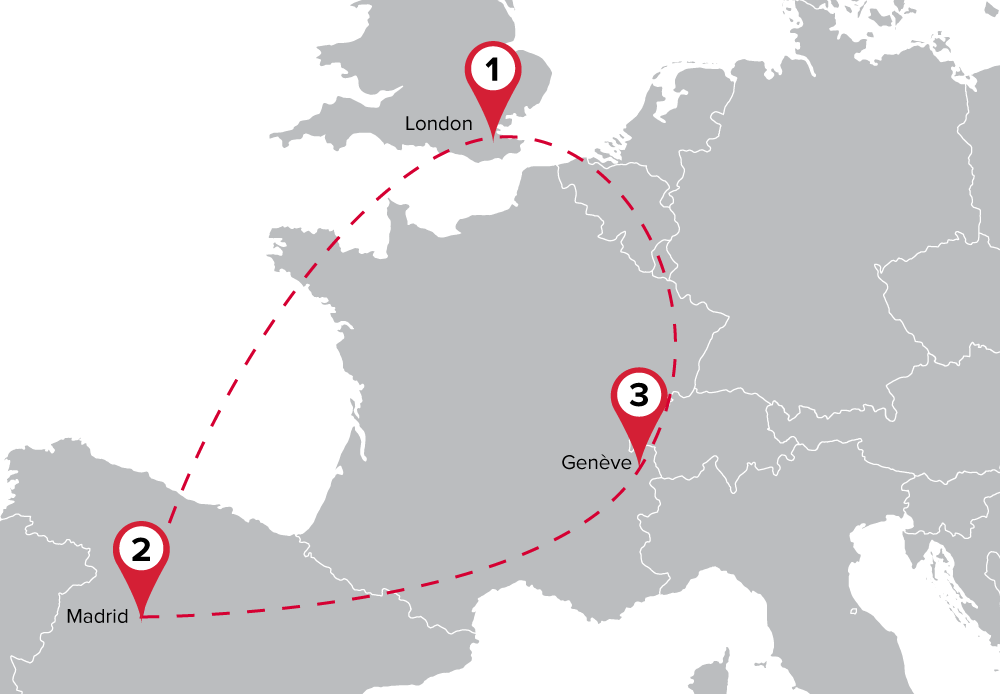
A CEO flying in a King Air can take off from one of London’s airports in the morning, attend a breakfast meeting in Genève, catch a conference in Madrid and be home by nightfall.
Executive air charter operator DragonFly Aviation began business in 2004 with one aircraft serving customers in South Wales, U.K. Today, the company employs a fleet of three 200-series King Air turboprops, providing clients with fast, comfortable and safe transportation from airfields anywhere in the United Kingdom and Ireland to destinations throughout Europe.
“DragonFly has always operated King Air 200 and B200 aircraft. As we expand, we keep adding more. Our clients appreciate the aircraft’s larger cabin size and lower operating costs, as well as its good, all-around versatility and performance,” said Howard Palser, DragonFly Aviation’s founder and CEO.
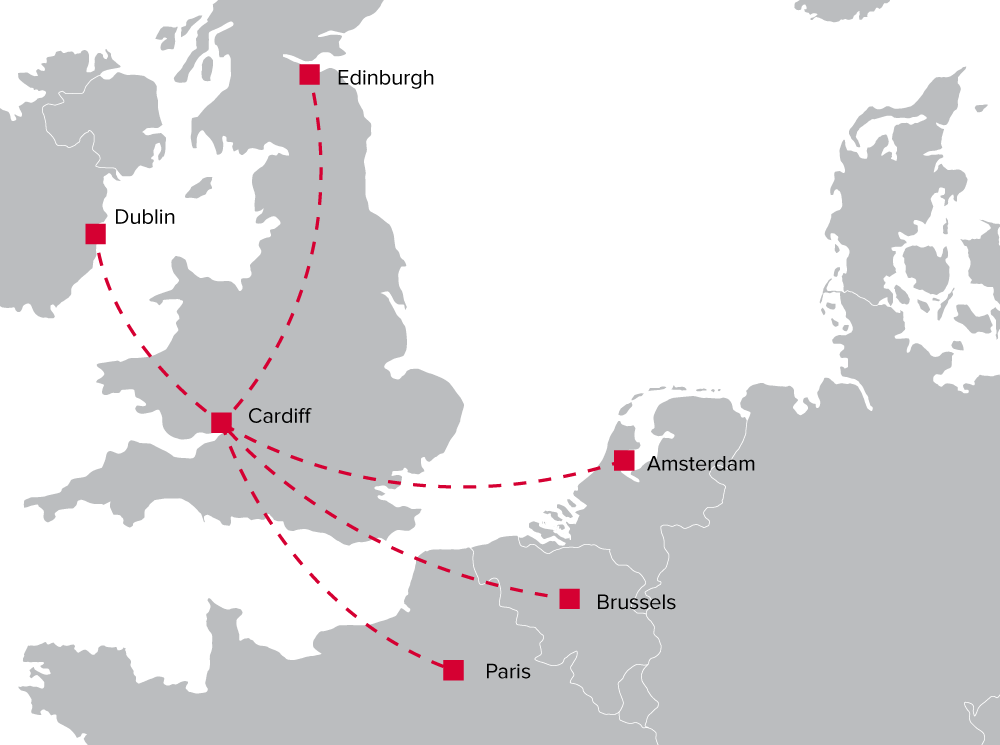
A King Air makes several crucial European cities accessible from Cardiff in just over an hour.
The aircraft, based at Cardiff International Airport, bring most of the British Isles and the European capitals of Paris, Amsterdam and Brussels within reach in just over an hour’s flying time. With four people on board and baggage of 44 pounds each, the aircraft can travel 950 miles before a fuel stop, according to Palser.
“The King Air 200’s engines provide excellent cruise performance as well as impressive short-field landing and takeoff characteristics. This enables the aircraft to land and take off at most of the hundreds of airfields within the U.K. and Europe that possess the landing and safety aids required for commercial operation,” Palser said.
Clients who utilize the business aircraft avoid the hassle, inconvenience and delay associated with scheduled flights. They can walk on and walk off the aircraft with no fuss, making it a much better experience than flying commercially. The King Air 200 is equipped with weather radar and a state-of-the-art satellite navigation system. It’s also pressurized, which adds considerably more comfort during the flight. It can also fly at up to 29,000 feet in smooth air above inclement weather.
To Gibraltar and back in one day
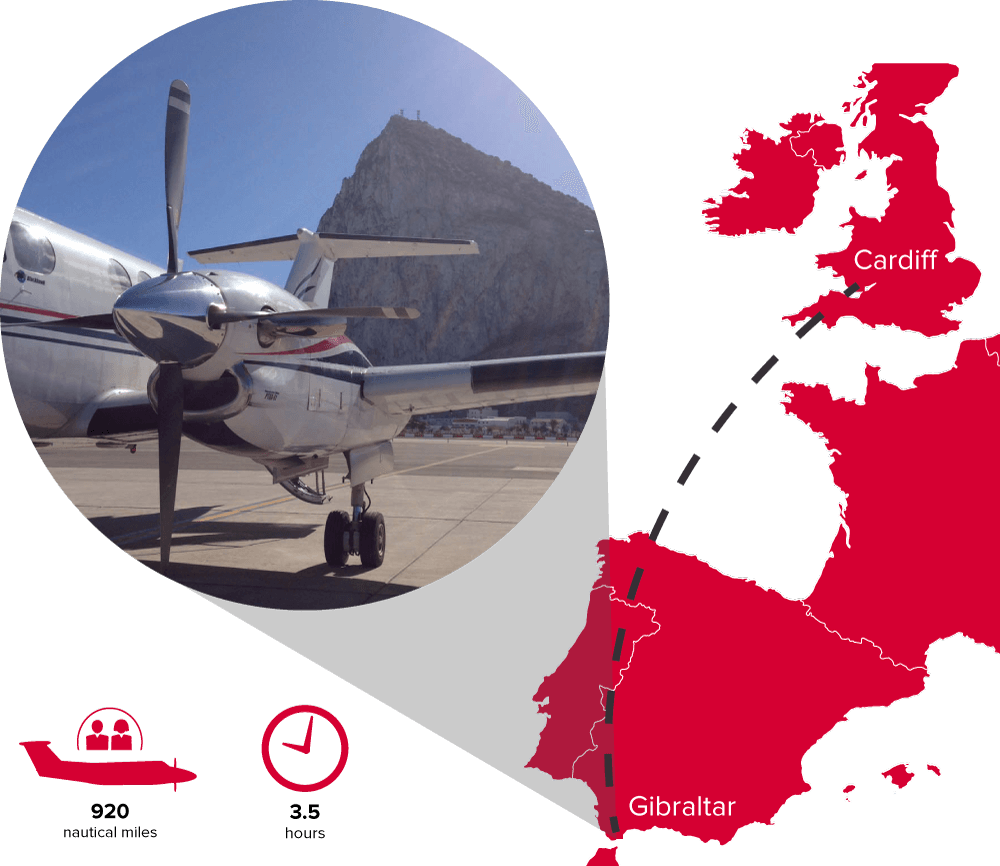
Two of DragonFly’s passengers flew directly from Cardiff to Gibraltar in a Beechcraft King Air 200 covering 920 nautical miles in less than 3.5 hours. The passengers were able to return home the same day, which would not have been possible by commercial airlines.
“The Beech King Air is not only sophisticated, fast and comfortable, but also rugged and well-proven. It is versatile and flexible and ideally suited to the requirements of executive and VIP passenger operation in the classic Beech seven- or eight-seat configuration. When necessary, it can be adapted easily for light cargo and air ambulance flights. It’s perfect for our clients’ missions,” Palser said.
DragonFly Aviation’s missions by the numbers

3–4
average passengers
1.5 - 2 hours
average trip length
years of operation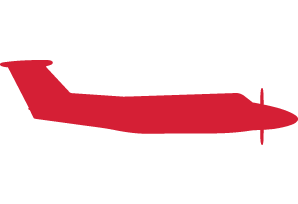
7,500
charter hours flown
Air Service Liège
Antwerp, Belgium
Belgian charter company Air Service Liège (ASL) flies more than 500 customers a year with its fleet of 30 aircraft, seven of which are Beechcraft turboprops, including a King Air B200, B200C, 300, 350 and 350i.
“We need to offer all types of aircraft to our customers. Having a mix of both turboprops and jets gives us the flexibility to fill virtually any need,” said Bjorn Mollet, ASL sales executive.
Based at Antwerp Airport, and with three facilities operating in Belgium and The Netherlands, ASL provides business flights, corporate shuttles, air ambulance flights, TV and radio relay flights and cargo transportation. Responding to demand, the charter operator doubled its King Air fleet over more than a decade. One of those deliveries was a King Air 350i.
“The Beechcraft King Air 350i is the Rolls Royce of turboprops, with its luxurious interior. It’s a fast turboprop with a cruising speed of 550 kilometers per hour. It is a pleasure to fly for the crew. Our customers have had unanimously positive reactions,” Ludwig Willems, an ASL pilot, said.
The average trip length lasts between 90 minutes and just over two hours, carrying two to six passengers. With the turboprops, customers can reach some 2,000 different destinations.
“Customers like the King Air for its performance, especially its short runway capability. For those who want to fly into smaller airfields or require medical flights or special missions operations, the King Air is the right aircraft.”Bjorn Mollet, ASL sales executive
For its 24/7 on-call air ambulance and organ transport flights, ASL works in conjunction with a company that provides the medical teams and handles flight logistics.
“Our Beechcraft aircraft can quickly be transformed into a mobile sickbay, equipped with all the necessary equipment, including stretchers, oxygen and electricity outlets, defibrillators, syringe pumps and respirators,” Willems said.
For cargo transportation and urgent parcel deliveries, ASL relies on its King Air 200 series.
“Often, ASL is called in for high-speed deliveries of small parcels. The cabin of our aircraft can be transformed into a cargo hold in no time, with the seats giving way to a platform where different pallets are lashed down. The cargo door enables us to quickly load and unload the aircraft,” Willems said.
TV and radio relays are one of ASL’s growing service lines, and it is the King Air B200 fleet’s most common mission. Camera or audio teams on the ground send television or radio signals up to a loitering aircraft overhead equipped with technology that receives the ground signal and sends it in real time to broadcast stations and satellites. Because of ASL’s work, viewers across Europe and around the globe get to watch major sporting events like the London Olympic Games and the Tour de France. Ironically, it’s the pilots who are often some of the last to see these major events, despite the action happening just below.
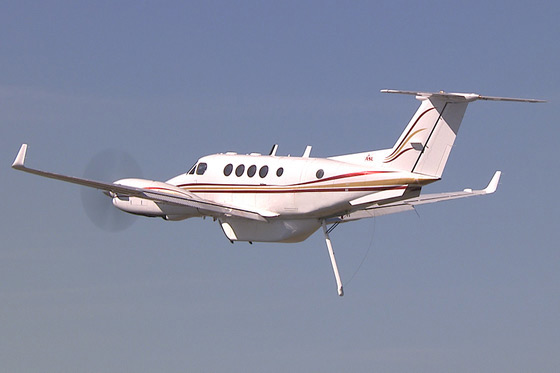
When ASL dispatches one of its aircraft for a TV or radio relay mission, the aircraft is outfitted with several pieces of special equipment, including the external antenna shown on the aircraft above. The charter operator uses the technology mainly to support sporting events like world championships, marathons and bicycle tours.
“They’re basically focusing on flying,” Maxime Wauters, ASL safety manager and pilot, said. “At the end of the day, when they land, they can see the result of their work when they watch TV.”
Wauters says the aircraft’s design and performance make it the ideal choice for a TV or radio relay mission. He says the crew can reconfigure the cabin with racks to hold the equipment in under two hours. When it’s time to take off, the speed and altitude at which the aircraft flies is ideal for effectively capturing the signals, and the airplane’s endurance allows it to stay in flight for up to six hours at a time, even with the weight of the equipment.
From comfortable business transportation to short-field performance, to quick-change interiors, ASL’s fleet of turboprops gives the charter operator the flexibility to respond efficiently and effectively to any customer’s needs.
Videos and stories contained in this site may contain information that while accurate at the time of publication, has since been updated. Please connect with a representative for any questions.